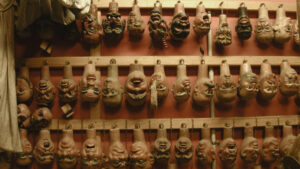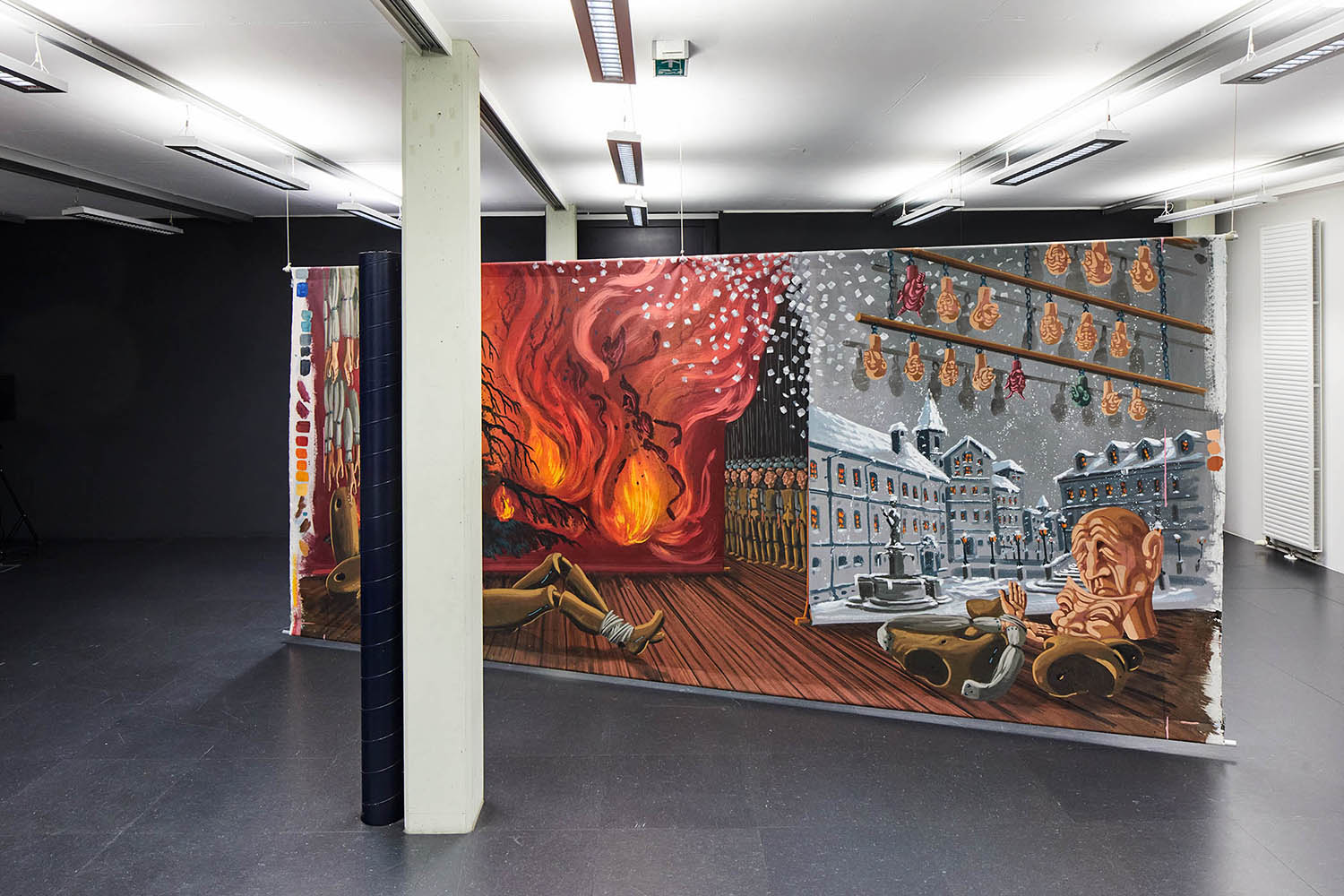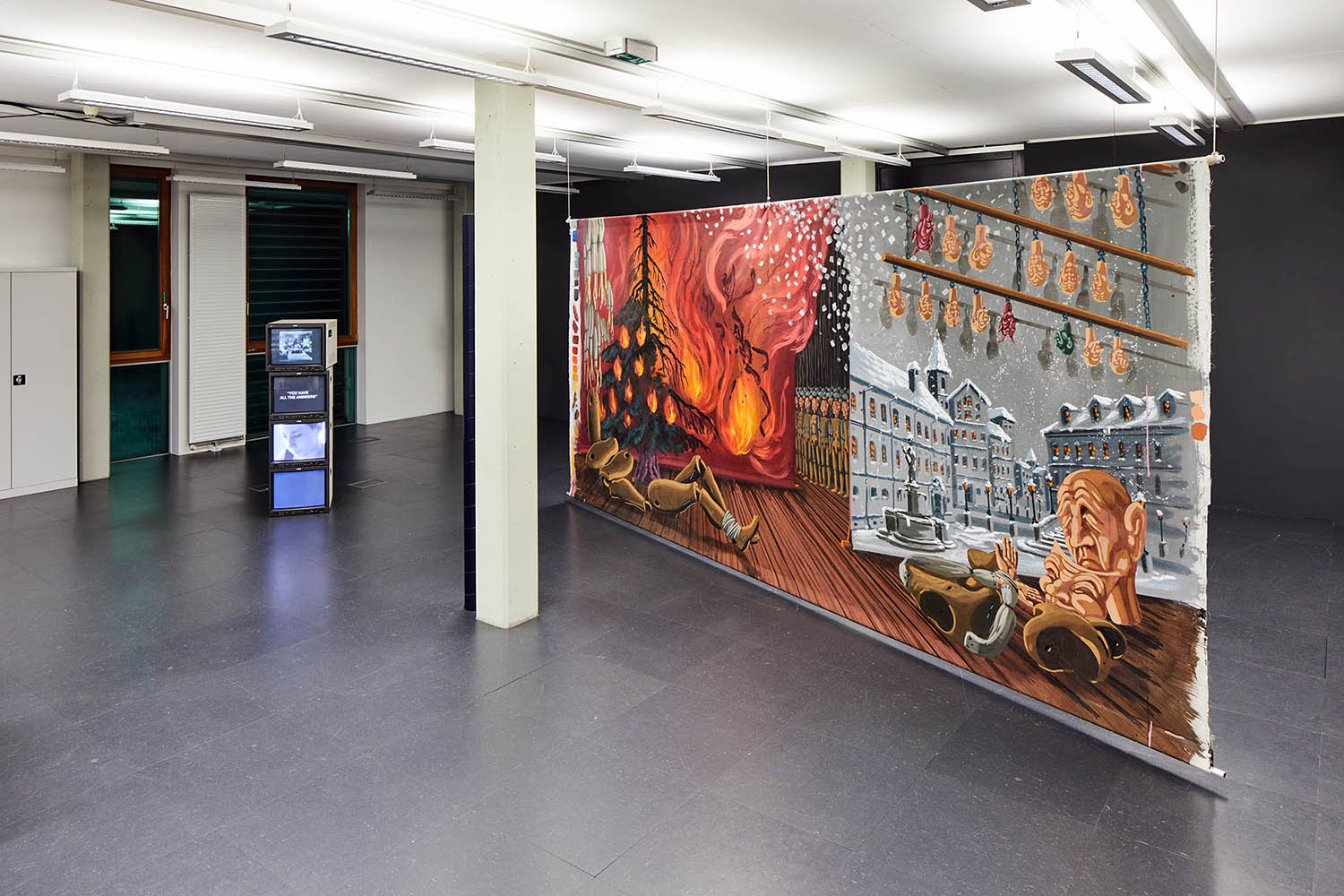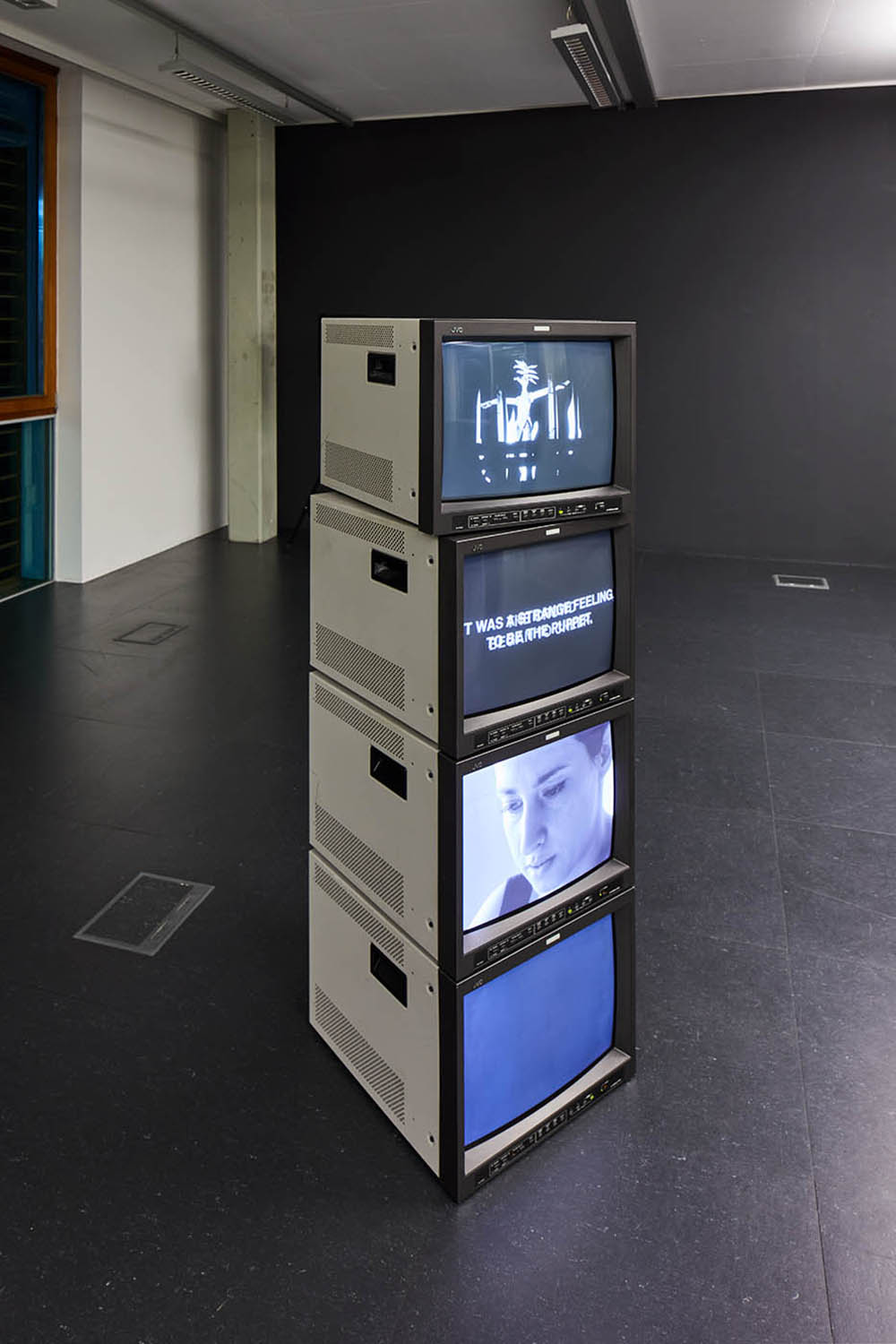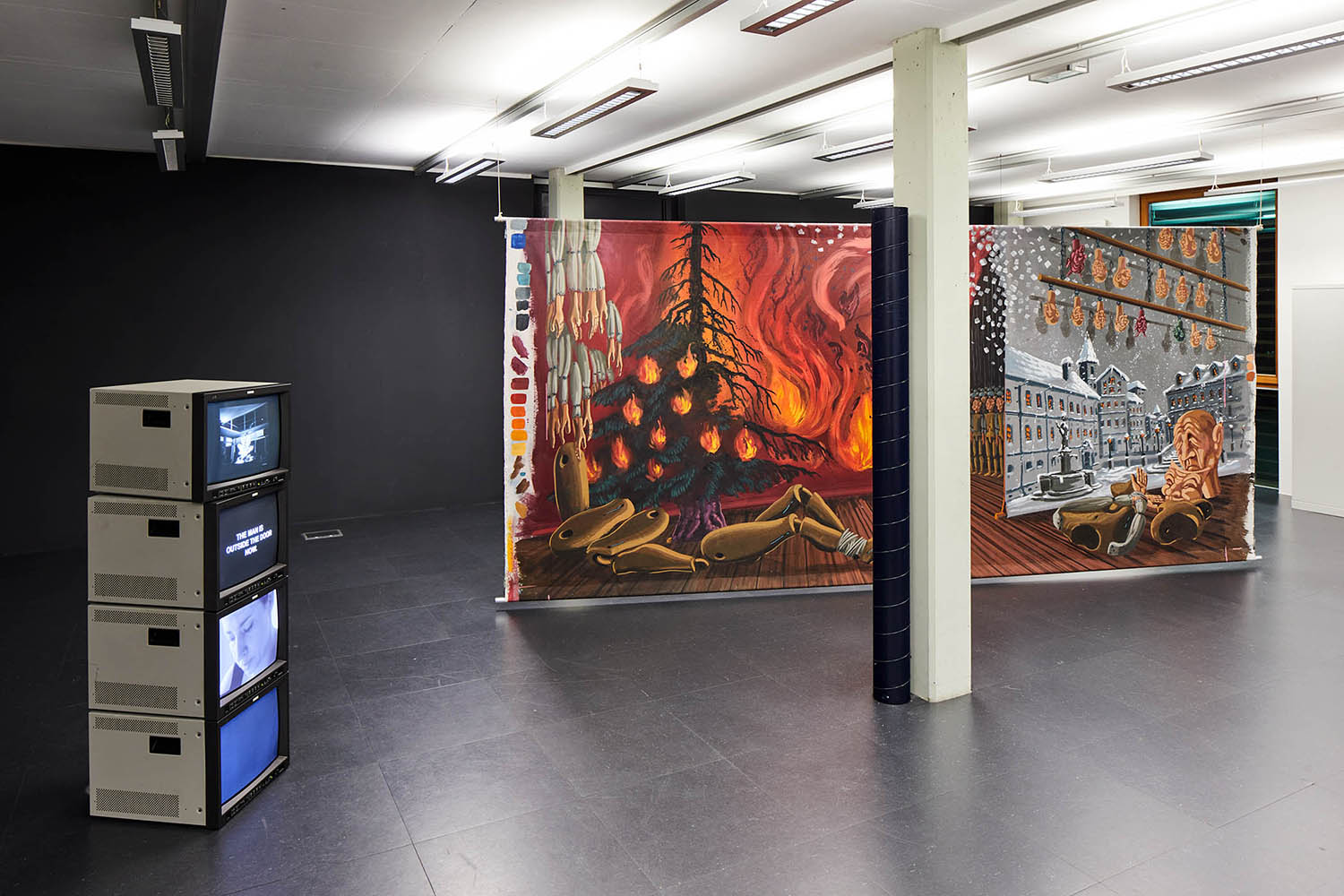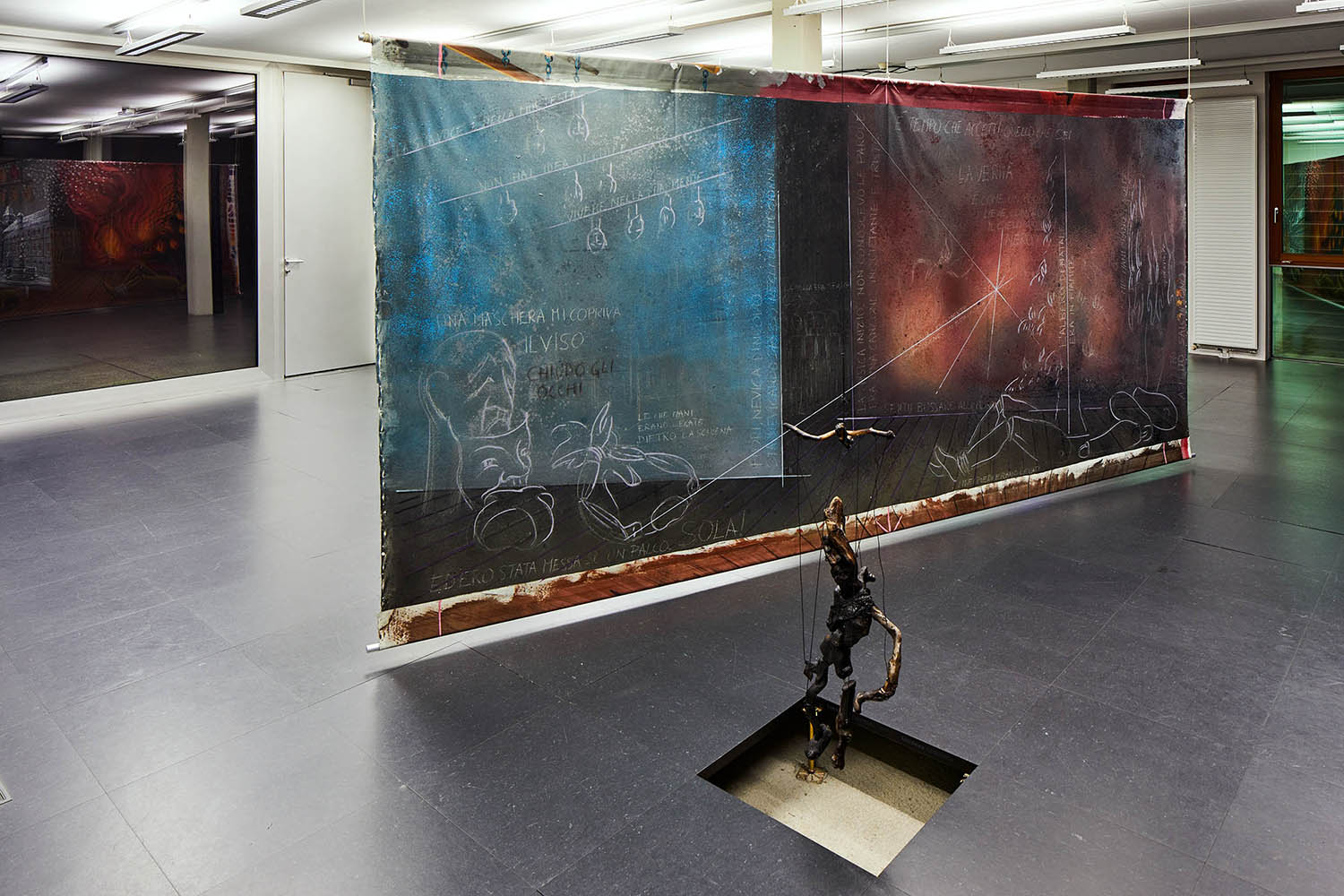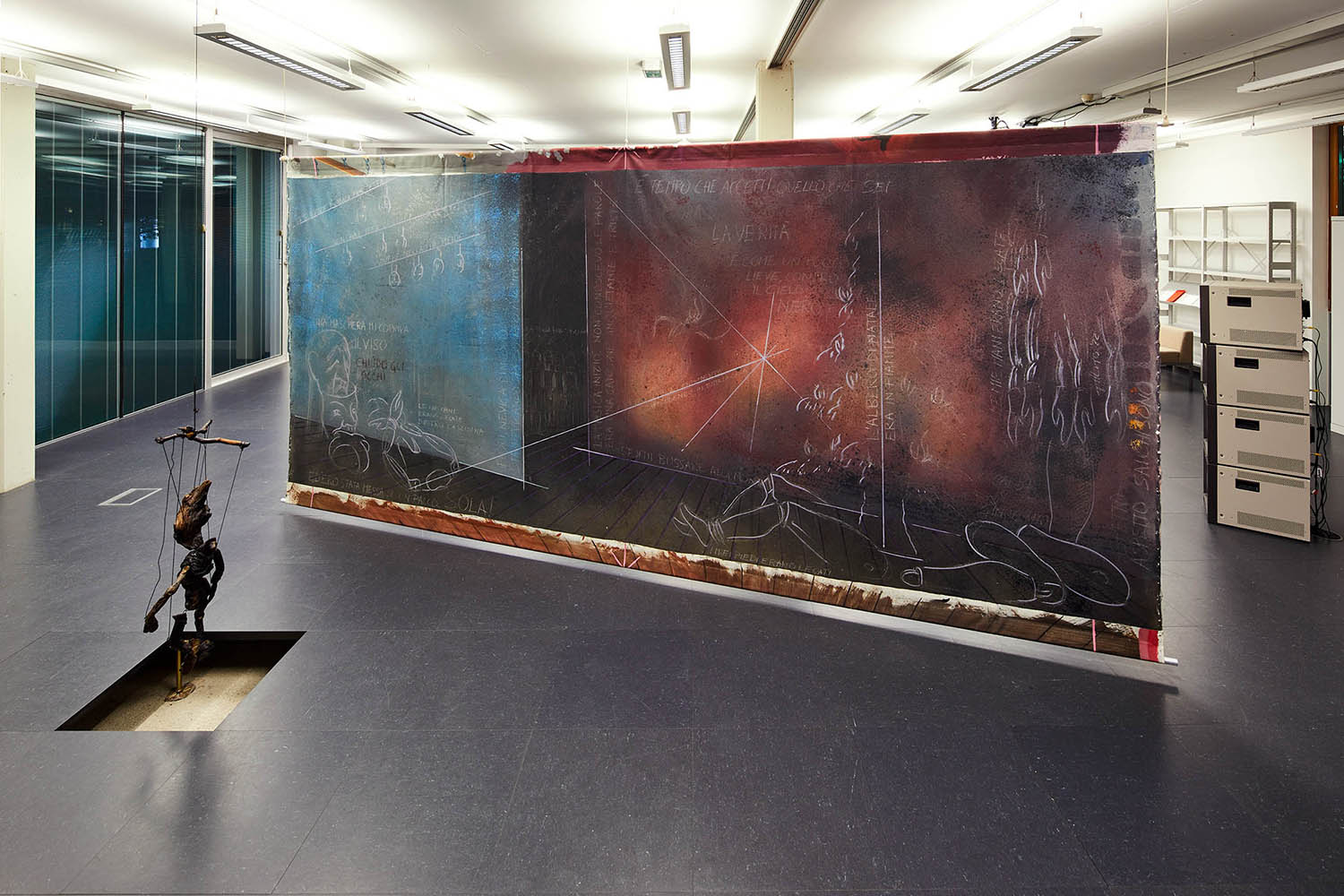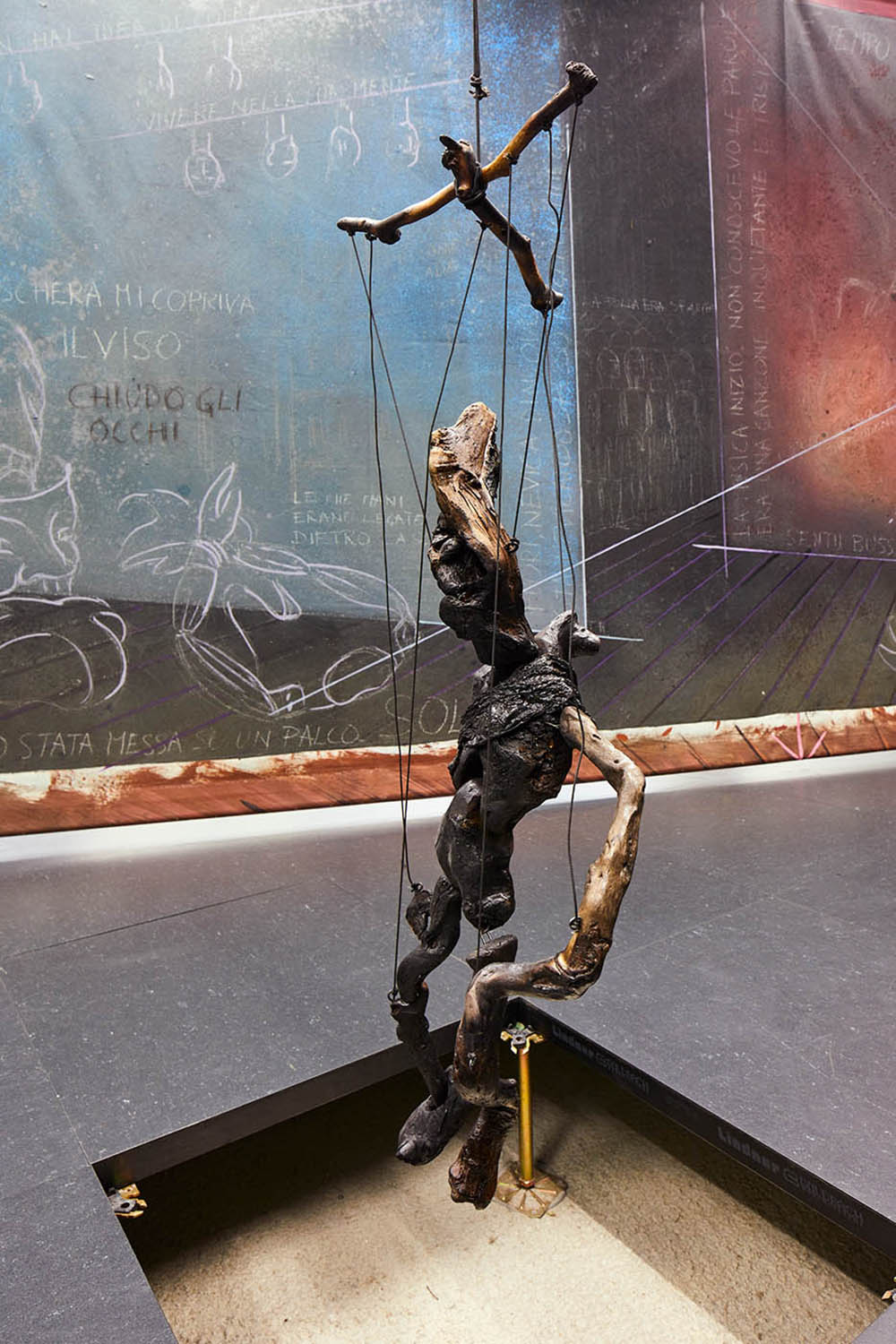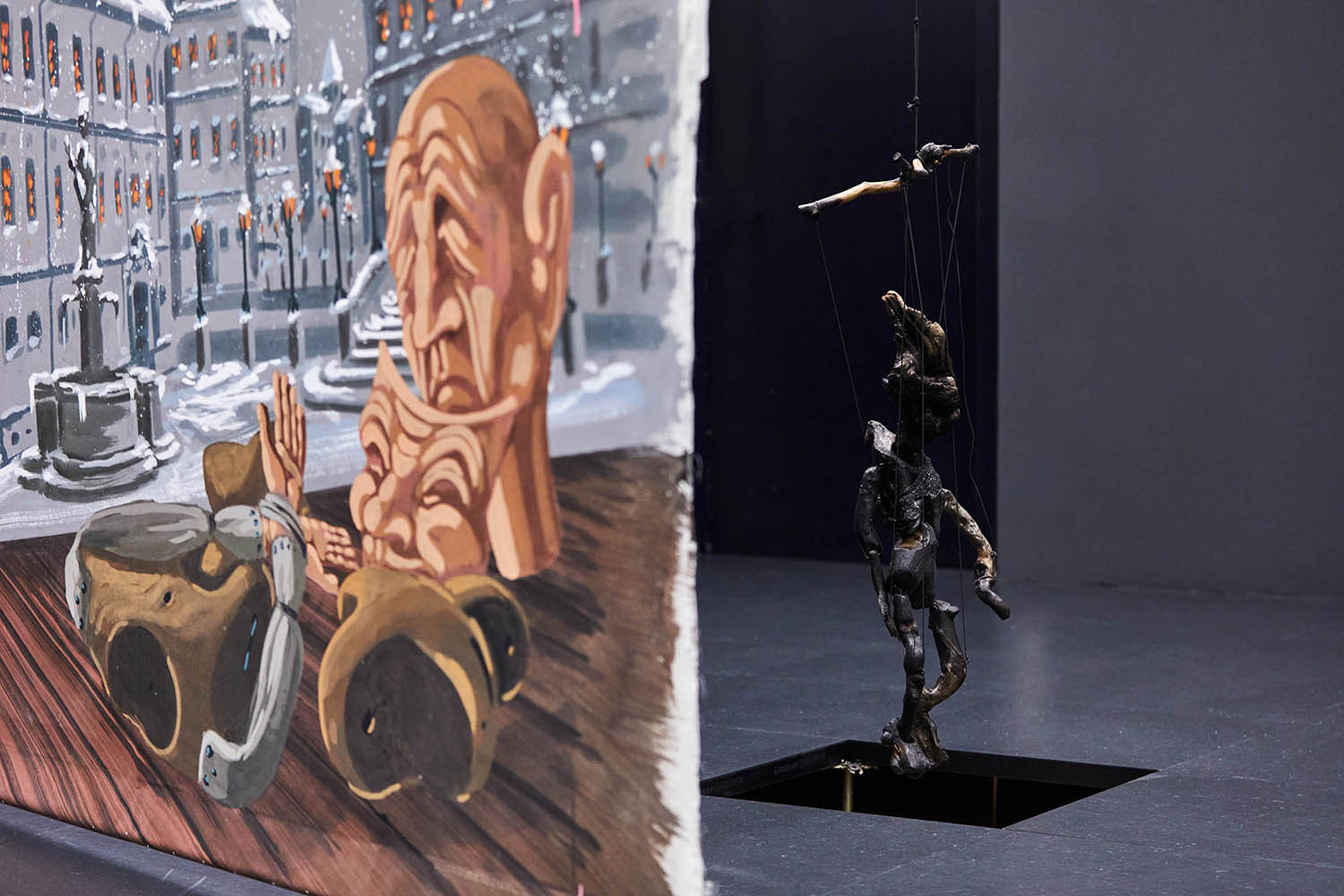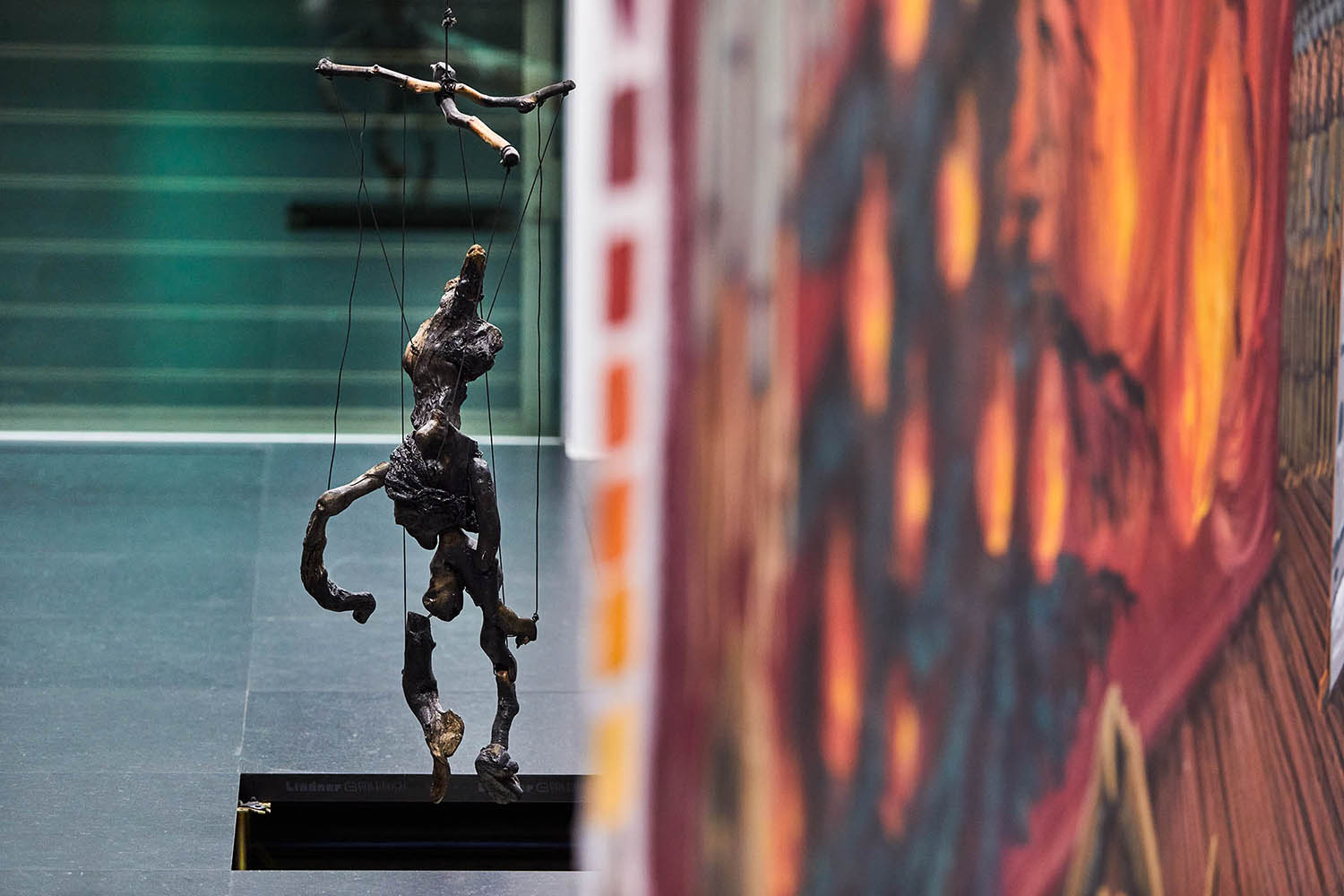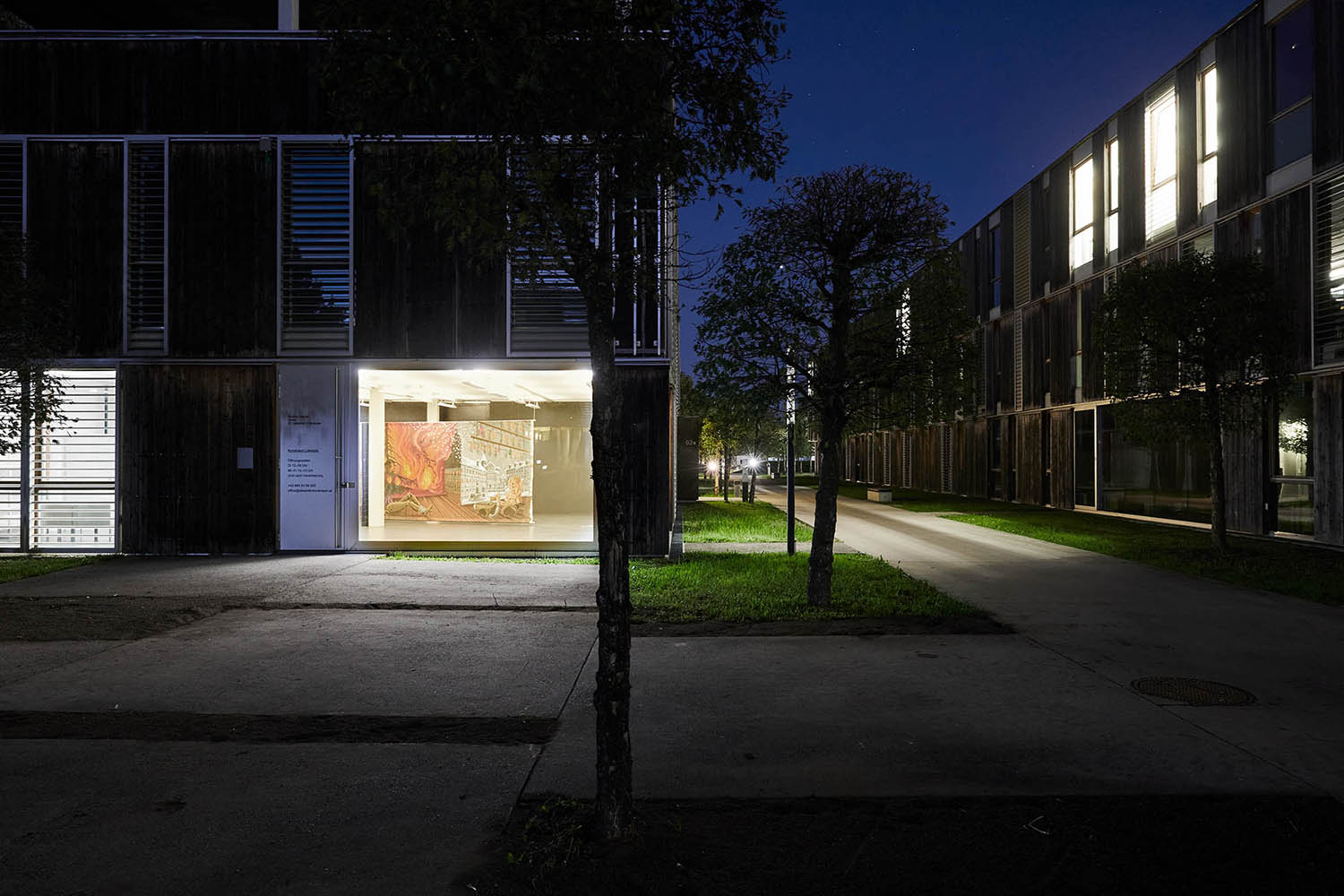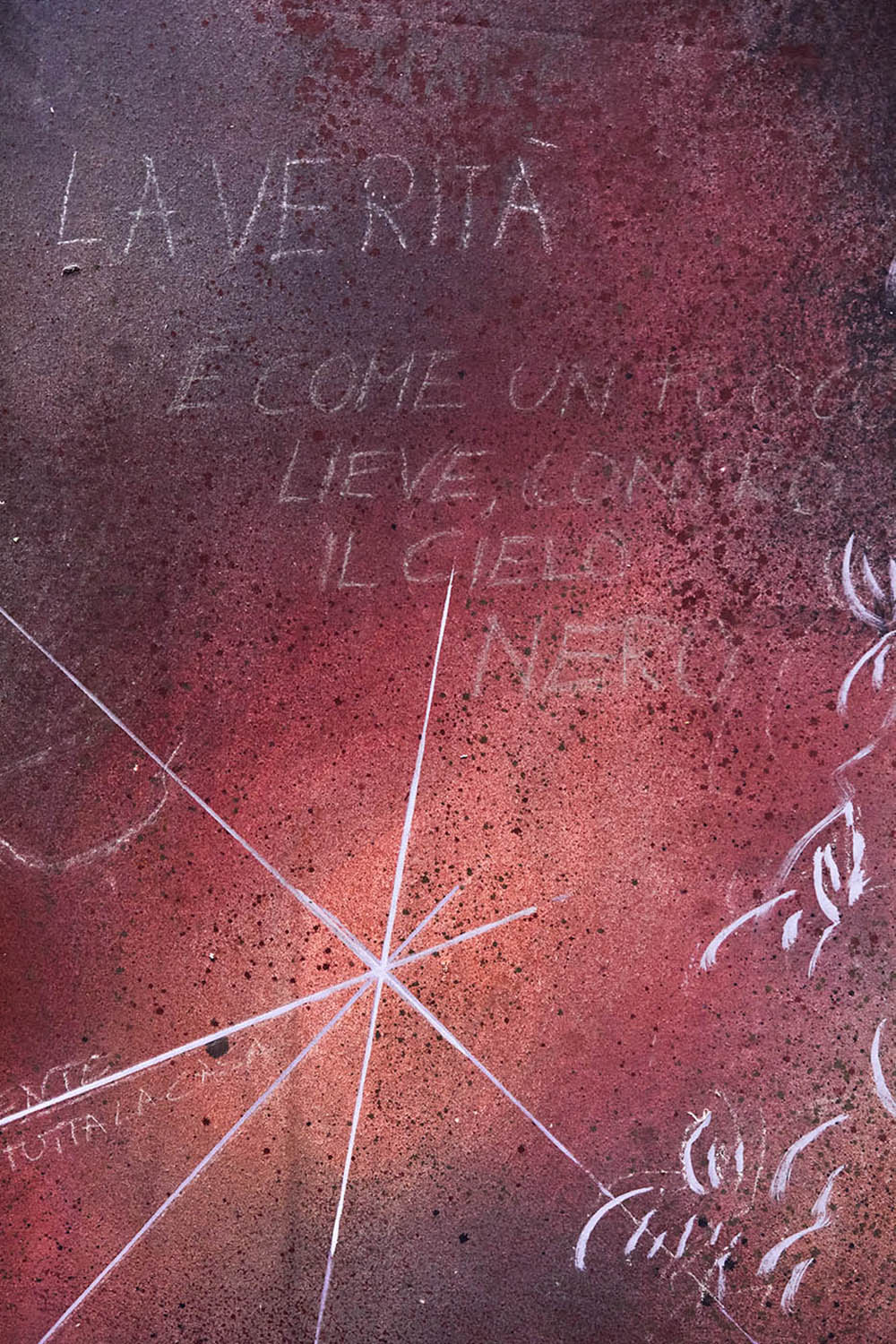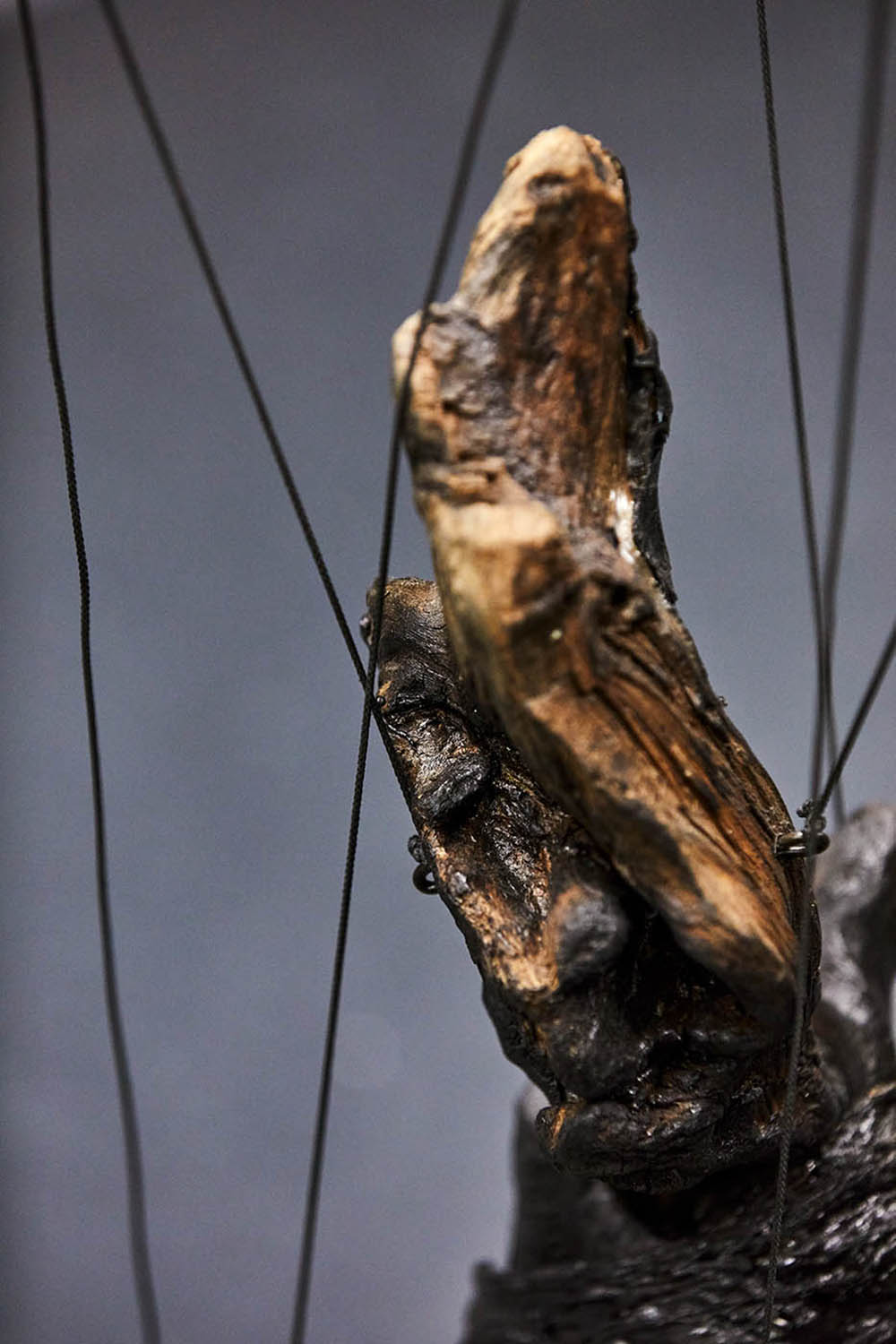Opening, September 27, 2022, 7 pm
Exhibition, September 28 – November 4, 2022
The curtains of a puppet theater, an enigmatic monologue, interspersed with poetic passages yet laden with violence, a performer who lends this text her voice, scenic depictions on a monitor, a puppet that has evidently fallen victim to a fire: According to artist Riccardo Giacconi, the exhibition Sipario at Kunstraum Lakeside is “a hypothesis of a puppet show”. By compiling the very means needed for such a stage play in the space, he leaves it to these narrative elements and to the audience to evoke the drama, its protagonists, and their backgrounds.
The scene is set with the eponymous “siparium”—the curtain that separates the stage from the auditorium during a change of scenery. As is quite customary in puppet theater, the picture painted on the front of the curtain by the Compagnia Marionettistica Carlo Colla e Figli summarizes the play. Or in other words: It arranges visual elements from different moments of the potential narrative into a single image. On one hand, these elements originate from the text that can be read and heard in the exhibition; on the other, it is a self-representation of the Carlo Colla & Sons Marionette Company, whose beginnings date back to the late eighteenth century. Ever since, members of this theater group have been working with wooden puppets in such an accomplished way that the puppets seem to teem with life during performances.
And the departure point of the monologue for this potential stage play goes almost as far back as the origins of the Compagnia: Giacconi fed the line “He asked me if I hadn’t found some of the dance movements of the puppets very graceful” from Heinrich von Kleist’s text “On the Marionette Theatre” (1810) into the online text generator InferKit in order to compose the monologue for Sipario. Artificial neural networks learn to write based on vast amounts of data; hence, they derive new content from patterns they have recognized. By giving such a machine input from a text passage about the far-flung art of puppetry, Giacconi pairs longstanding conceptions about what it means to have consciousness and intention with contemporary questions about the possibilities and limitations of artificial neural networks. Interestingly, Kleist breaks with the prevailing opinion of his time in his text when he identifies the potential for grace—in classical aesthetics, a form of beauty that is expressed especially in movement—in the lack of consciousness. The marionette serves as a particularly compelling example for his thesis, as its grace is owed to the combination of the material body of the puppet, the dexterity of its player, and gravity.
The text generator used by Giacconi to construe the monologue seems to pick up on Kleist’s idea when it writes in another text: “A puppet will move, regardless of its state of ‘awareness’, if it is given the necessary ‘muscle’. In essence, this means that a puppet must be ‘understood’ before it can be moved.” The artist ensures that members of the Compagnia Colla would describe the art of the puppeteer in a comparable way, as it is not about the complete control over an inanimate object but about letting oneself be guided by the puppet.* This interaction of materials and energies can be exemplary for any creative process. Riccardo Giacconi suggests this interpretation when he integrates spots of color that have randomly soaked through the fabric while painting the front into the design of the back of the curtain. They can potentially be “read”—in connection with the other clues he presents in the exhibition—just like the image on the front can be decoded like a rebus.
Conceiving an exhibition as a hypothesis, as Riccardo Giacconi does, underscores its performative character. It is not placed in space as a completed work but rather unfolds as a statement or supposition of facts in time. It invites the viewer to formulate theses about possible histories, about the before and the after, and to revise them once again. The given merges with the speculative and conjectural, concrete objects synthesize with the mediated, the ancient art of puppetry enters into a dialogue with the emerging technology of neural networks. The new work developed for Kunstraum Lakeside thereby represents a continuation of Riccardo Giacconi’s artistic practice based on long-term research. For also the previous works of the artist create links with concrete moments from seemingly distant domains in order to make fault lines and continuities, contradictions and contingencies tangible. In doing so, he draws on modes of illustration, narration, and interpretation that reside outside of visual arts, such as puppet theater, slideshow evenings, or even tarot. The artist weaves objects, films, audio elements, images, texts, and findings from his research into multilayered installative narratives. The exhibition space serves as a framework or setting for a constellation of heterogeneous elements, while identifying contingent points in their network of references despite all their differences. Riccardo Giacconi’s Sipario is an experimental setup. It is up to the viewers to formulate questions—for example, about the violence in the monologue and its roots, about the categorical separation of the animate and the inanimate so deeply anchored in our society, or about the appeal of assemblages that have come into being without intention—and to draw their conclusions afterwards. They can only do so by entering this experiment and thereby become part of the collection of things and narratives on site.
Riccardo Giacconi (b. 1985 in Italy) lives and works in Boston, MA.
www.riccardogiacconi.com
*Cf. Riccardo Giacconi, “Giochi dell’imitazione. Marionette, Golem e macchine che scrivono,” Il Tascabile (2021), https://www.iltascabile.com/letterature/giochi-imitazione.
